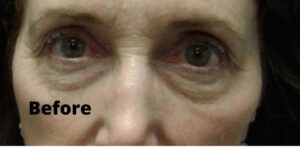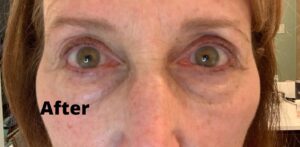Eyelid Surgery, otherwise known as blepharoplasty, is one of the most commonly performed cosmetic surgical procedures.
One of the most noticeable signs of aging is drooping of the eyelids. The skin of the eyelids is the thinnest compared to anywhere else on the body. Constant blinking works to stretch and loosen the skin, and the muscles of the eyelids weaken over time. The result is the natural contour of the eyelids is disrupted. The skin on the upper lid begins to fold over and rest on the eyelashes. Secondary effects of aging eyelids include fatty deposits, puffiness and bags of the lower lids. In more severe cases, the vision and health of the eye itself may also be affected..
Eyelid surgery can involve the upper lids, the lower lids, or both. The best candidates include patients who are in otherwise good health, non-smokers, and people without serious eye diseases. Patients also need to have reasonable expectations.
The cost of surgery will depend on whether excess skin alone requires removal, or if more extensive procedures are required, such as muscle or fat removal or repositioning of the lid itself. This is addressed ahead of time during the initial consultation with the surgeon.
The consultation with the surgeon will involve taking a complete medical history. Photographs will be taken and surgical outcomes will be discussed, including the possible risks of surgery. The types of anesthesia will also be discussed.
Some important questions to ask include the experience of the surgeon, whether the procedure will be performed in a hospital or out-patient surgical center, possible complications and non-surgical options.
In preparation for surgery, patients should be medically stable with a recent evaluation by their primary care physician. Smokers should stop at least two to three weeks in advance of surgery and avoid aspirin and other anti-inflammatory drugs that could increase bleeding and bruising.
On the day of surgery, the patient will receive anesthesia, either oral or intravenous. General anesthesia is rarely necessary, except in cases involving extensive reconstruction. The natural lid creese will typically conceal the incision. Light bandages and ice packs may be applied at the end of the procedure. Sunglasses should be worn outdoors.
Patients may resume regular activities in one to two days, and sutures are typically removed in six to seven days. Patients are reasonably presentable by two weeks, but swelling may take additional time to resolve. The results of blepharoplasty are permanent, but the eyes will continue to age.




